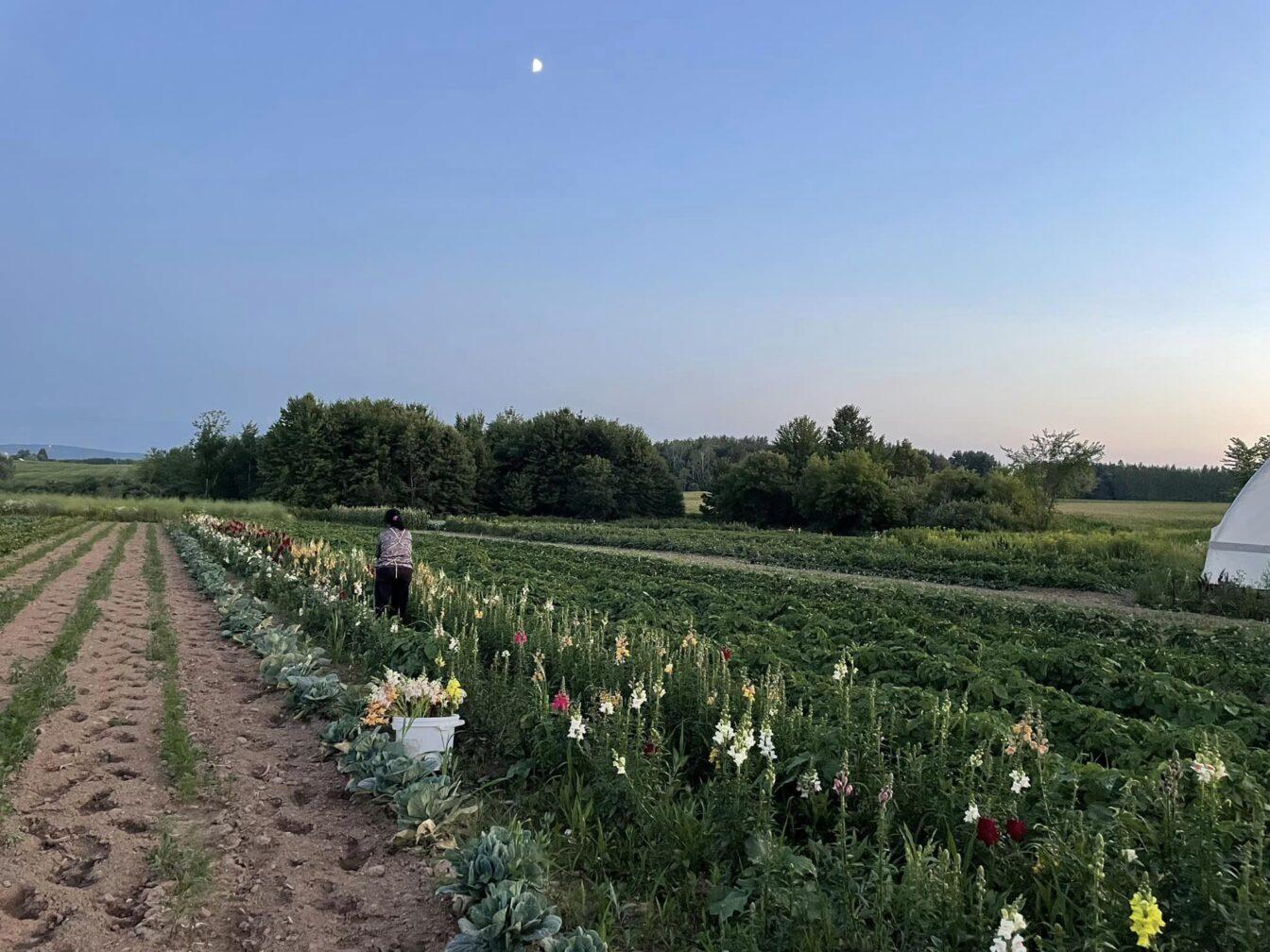The Hmong/HMoob Farmers/Growers program is creating a network for Hmong farmers to access farming resources and find support and community. The program began in 2022 after securing funding from the United States Department of Agriculture.
“Agriculture is a very big part of the Hmong culture,” HMoob student at the University of Wisconsin Julia Xiong said. “That’s how they live back in Laos and Thailand…and so I think that’s how a lot of the older generations keep in touch with their roots and where they came from.”
Hmong/HMoob growers are recognized as important contributors to Wisconsin communities, according to the Division of Extension Farm Management.
HMoob farm outreach student assistant for the program Kiana Chang communicates with five program partners and two outside organizations to receive funding for the program. She also built the program’s Facebook page, which serves as the main hub for the program’s resources and communication.
“We’re in our first year of the grant, so that’s just building the network and seeing what our community needs and trying to just get everyone to…know each other and the organizations that run it,” Chang said.
Chang said before the programming began, the program directors led focus groups to help understand the needs of Hmong/HMoob growers. These needs became the five pillars of the program — land access, farm production, market access, access to programs and careers in agriculture.
To meet these needs, Chang and her team have worked on creating outreach materials like land access tutorials and hands-on workshops covering topics like weeding and soil testing. These resources are unique because they are available in both English and Hmong.
She also creates and distributes Hmong-translated videos that assist with financial questions about topics like land lease forms and accounting systems.
As a Hmong individual, Chang said she appreciates being a connection between Hmong growers and farming resources and finds it rewarding.
“Growing up, I got to see my grandparents do a lot of farming,” Chang said. “I saw them go through a lot of hardships…and since they don’t really speak English that well, they can’t really reach out to anyone other than other Hmong people…and finally, we’re making [farming resources] more accessible to them.”
Tong Lee and Zoua Yang Lee run Lee Family’s Produce, a small-scale HMoob farm based in Wausau, Wisconsin. They have been farming their entire lifetime, their daughter Kathy Lee said.
When they lived in Laos, they farmed to feed themselves and continued to farm after immigrating to America. In 2010, they began to sell their produce and flowers at the Weston Farmers Market, a common venue for Hmong farmers to sell their products.
The Lee Family has been involved in the program’s Facebook and uses the network to ask other Hmong growers questions they have about well development and funding opportunities for their farms, something that has been historically difficult to find.
They also use the Facebook page for finding community and networking among other Wisconsin growers, which was not possible without the use of the program’s social media.
“They [my parents] get to meet other growers out there and see how it is, versus just knowing the other Hmong growers that live in town,” Kathy Lee said.
The program has worked collaboratively on a UW course called Culturally Responsive Science Communication. Course professor and Environmental Communication Specialist for Extension Bret Shaw said his course studies inclusive communication strategies to increase the accessibility of science in different communities.
Last year, part of the course involved a final team project that used the Hmong Growers program as a case study and helped develop outreach tools specific to the Hmong farming community.
Shaw said the class project is reciprocal in that both the students and the program learn about the best science communication tools for Hmong growers.
“[Students] would learn about Hmong culture, which is a way to learn to be culturally responsive in terms of science education,” Shaw said. “And then, at the same time, the project benefits from seeing their ideas because [students] often are more expert in social media than are the sponsors or the project managers.”
Xiong took the class last spring and said what she learned can help her community and where she comes from. Specifically, she said she thought about how her grandma goes to farms and how she can take this knowledge back home.
The grant will continue to run for the next two years before reapplying for more funding. Until then, Chang is working on new projects in the program, including video interviews with people who are Hmong working in different parts of the agricultural field. Chang said she hopes it will open up opportunities for younger generations to be involved in the field.
“It’s an uplifting thing,” Kathy Lee translated for her father Tong Lee. “It’s nice to know that we have other resources out there…it’s a nice supportive system for us to have.”


